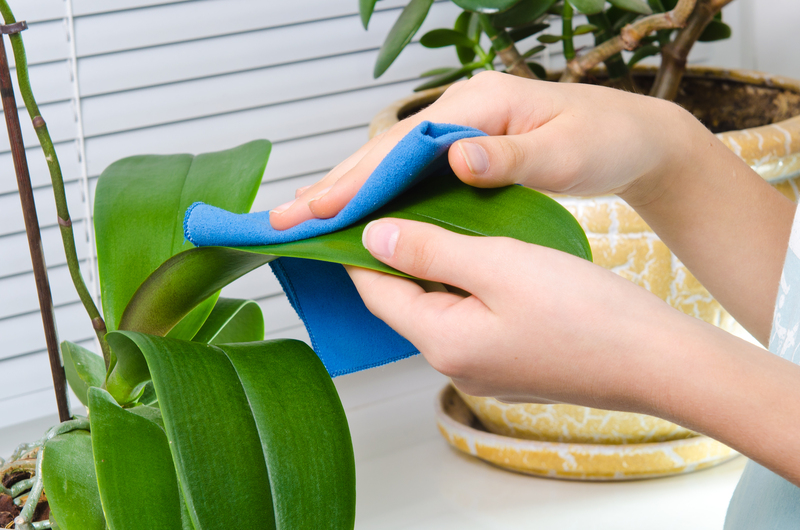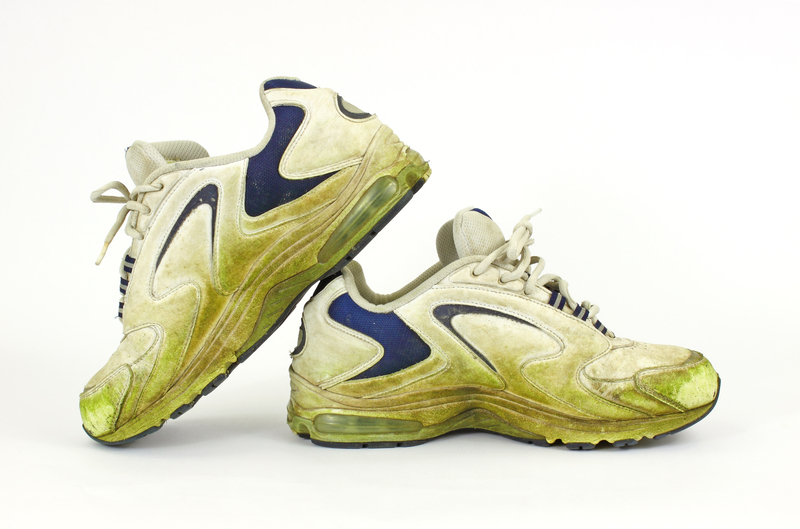Learn the Secrets Behind a Permanently Mold-Free Bathroom
Posted on 19/09/2025
Learn the Secrets Behind a Permanently Mold-Free Bathroom
Are you exhausted from scrubbing persistent mold stains off your bathroom walls and tiles? You're not alone. Mold is an unwelcome guest in many homes, thriving in moist, enclosed environments--especially our bathrooms. But what if you could banish bathroom mold once and for all? In this comprehensive guide, we'll reveal the science, strategies, and secrets to keep your bathroom mold-free permanently.

Why Bathrooms Are Prone to Mold Growth
To effectively combat bathroom mold, it's essential to first understand why it loves the bathroom so much. Bathrooms offer the ideal breeding grounds for mold due to their high humidity, frequent water usage, and sometimes insufficient ventilation. Mold spores are always present in the air, but when they meet moisture and organic material--like soap scum, hair, or even the cellulose in drywall surfaces--they rapidly multiply.
- High Humidity: Hot showers and baths elevate humidity, which condenses on walls, ceilings, and fixtures.
- Poor Ventilation: Inadequately ventilated bathrooms trap this humid air, prolonging dampness.
- Water Accumulation: Leaky faucets, shower doors, or poorly sealed tiles can allow water to pool and seep into cracks.
- Organic Debris: Hair, skin cells, and soap residues provide food for mold colonies.
Health Risks Associated with Moldy Bathrooms
Aside from the unsightly black stains, mold poses significant health risks. It can exacerbate allergies, trigger asthma attacks, or cause respiratory issues, especially in children, the elderly, and those with compromised immune systems. That's why achieving a permanently mold-free bathroom isn't just about aesthetics--it's about wellness.
Effective (And Permanent) Mold Prevention Strategies
Let's unlock the secrets to a mold-resistant, permanently fresh bathroom. These actionable steps, when combined, offer strong protection against mold--even in the most humid environments.
1. Master Bathroom Ventilation
The single most important factor in eliminating bathroom mold is managing moisture. Proper ventilation is crucial. Here's how to ensure air flows freely, keeping humidity levels in check:
- Install a High-Quality Exhaust Fan: Exhaust fans efficiently pull moist air out of the bathroom. Always run your fan during showers and baths, and leave it on for 20-30 minutes afterward.
- Open Windows: If your bathroom has windows, take advantage of them. Opening a window accelerates moisture dissipation.
- Leave Doors Open After Use: Letting your bathroom air out after use helps excess humidity escape.
2. Control Humidity with Dehumidifiers
In homes with central weaknesses in ventilation or climates with high year-round humidity, consider deploying a portable dehumidifier in the bathroom. Many modern appliances have timers and sensors to operate only when needed, keeping bathroom humidity below the mold-promoting threshold of 60%.
3. Choose Mold-Resistant Building Materials
If you're remodeling or building, opt for materials that inherently resist mold:
- Mold-Resistant Drywall (Greenboard or Purple Board): These products have moisture-repellent coatings that deter mold growth even after years of exposure.
- Non-Porous Tiles: Porcelain or glazed ceramic tiles resist water absorption better than natural stone.
- Waterproof Grout: Epoxy-based grout and caulks keep water from penetrating seams.
- Mildew-Resistant Paint: Specially formulated paints prevent mold spores from taking hold on walls and ceilings.
Preventing Mold at the Source: Sealing and Maintenance
Even with the best materials, regular sealing and proactive maintenance form a critical layer of defense:
- Seal Grout and Tiles: Apply a quality tile and grout sealant annually. This waterproof layer stops moisture from seeping below the surface.
- Check for Leaks: Inspect fittings around toilets, sinks, tubs, and showers. Promptly repair every drip or leak to keep surfaces dry.
- Replace Failing Caulk: Cracked or peeling caulk offers places for water and mold spores to settle. Reseal these areas right away.
Establish a Mold-Prevention Daily Routine
Good bathroom cleaning habits play a huge role in long-term mold prevention. A few minutes a day can save you major cleanup (and potential health hazards) down the line:
- Wipe Surfaces After Each Shower: Use a squeegee on walls, glass, and tiles to quickly remove moisture.
- Dry Towels & Mats: Hang them outside the bathroom to dry, reducing ambient moisture.
- Remove Hair & Soap Build-Up: These residues feed mold. Wipe or rinse them away regularly.
- Keep Shower Curtains Spread Open: This increases airflow, allowing them to dry faster.
- Use Mold-Preventing Cleaners Weekly: Products containing hydrogen peroxide, vinegar, or baking soda can discourage mold without harsh chemicals.
Spot-Check and Troubleshoot Hidden Areas
Mold often lurks out of sight. Don't neglect:
- The underside of bath mats
- Corners of the tub or shower basin
- Behind toilets and under sinks
- Window sills, especially in older homes
- Ceiling corners
Make these areas part of your weekly cleaning and inspection routine to stay ahead of developing mold.
Deep Cleaning for Stubborn Mold Removal
If you already see black or green patches, don't panic. The following steps can safely and effectively remove and inhibit further bathroom mold growth:
Safe & Effective Mold Cleaning Solutions
- Hydrogen Peroxide: Spray 3% hydrogen peroxide directly on affected areas, let sit for 10 minutes, then scrub and rinse.
- White Vinegar: Vinegar naturally kills about 80% of mold species. Spray undiluted and leave for an hour before wiping away.
- Baking Soda Paste: Mix with water, apply to stains, scrub, and rinse. It's safe for most surfaces.
- Commercial Mold Removers: For persistent infestations, consider a product formulated specifically for bathroom mold and mildew.
Tip: Always wear gloves, goggles, and a mask when handling mold to avoid skin and respiratory irritation.
When To Call a Professional
If the infestation covers more than 10 square feet, appears inside walls or ceilings, or recurs frequently despite your best efforts, it's time to consult a licensed mold remediation specialist. Hidden leaks or structural issues may need to be addressed to stop the cycle and maintain a mold-free bathroom.
Frequently Asked Questions (FAQs)
What causes bathroom mold to return?
Mold comes back if the root cause--excess moisture--isn't addressed. Inadequate ventilation, unnoticed leaks, or poor cleaning routines allow mold to repopulate even after initial cleaning.
Can you completely prevent mold forever in the bathroom?
With the right combination of thorough ventilation, water control, routine cleaning, and proper building materials, it's possible to maintain a permanently mold-free bathroom. Vigilance is key.
How often should I inspect my bathroom for mold?
Make inspection part of your weekly cleaning routine. Don't forget hard-to-spot areas, and act quickly at the first sign of trouble.
Is bleach the best cleaner for bathroom mold?
While bleach can remove surface stains, it doesn't always kill all mold spores, especially on porous surfaces. Hydrogen peroxide and vinegar are safer and more eco-friendly alternatives.
Are there any natural ways to prevent bathroom mold?
Yes! Good airflow, regular squeegeeing, natural cleaners (like vinegar and baking soda), and moisture control are all effective, chemical-free strategies.

Designing for Lifetime Mold Prevention
To make your bathroom truly mold-proof, think about the design and materials from the ground up. Here are expert recommendations for designing and maintaining a permanently mold-free bathroom:
- Use Large, Easy-to-Clean Tiles: Fewer grout lines mean fewer places for mold to gain a foothold.
- Install Underfloor Heating: Keeps floors dry and discourages mold growth, especially in humid climates.
- Install a Timer or Humidity Sensor on Your Fan: Automatically runs the exhaust fan until the room is dry.
- Choose Wall-Mounted Fixtures: Frees up floor space for easy cleaning and eliminates areas where water gathers.
- Remove Clutter: Store as few items as possible in the bathroom, as lotions, bottles, and fabrics can harbor trapped moisture and mold.
Conclusion: Unlock the Secrets to a Mold-Free Future
To keep your bathroom mold-free for good, it's all about consistent moisture control, good airflow, smart material choices, and routine cleaning. Mold doesn't stand a chance against a well-designed, thoughtfully maintained environment. By implementing these proven methods, you can look forward to a permanently fresh, clean, and healthy bathroom--today, tomorrow, and for years to come.
Ready to reclaim your sanctuary? Start these tips now and join the ranks of those who've learned the real secrets behind a permanently mold-free bathroom.




 Sofa Cleaning
Sofa Cleaning
 Curtain Cleaning
Curtain Cleaning
 Office Cleaning
Office Cleaning